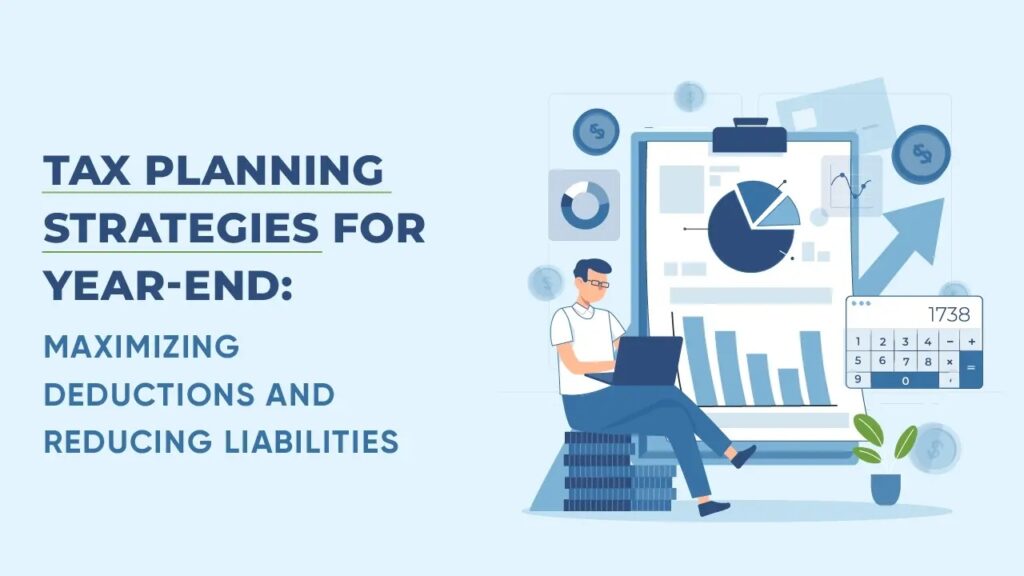As we reach the midpoint of 2025, now is the perfect time to review your tax situation and implement strategies to minimize your liability. Proactive mid-year tax planning allows you to optimize deductions, take advantage of tax credits, and adjust withholdings before the year ends.
In this comprehensive guide, we’ll explore actionable tax planning strategies for individuals and businesses in 2025. Whether you’re a freelancer, small business owner, or salaried employee, these tips will help you keep more of your hard-earned money while staying compliant with IRS regulations.
Why Mid-Year Tax Planning Matters
Many taxpayers wait until April to think about their taxes, but by then, it’s often too late to make meaningful changes. Mid-year tax planning provides several key benefits:
- Identify potential tax savings before year-end deadlines.
- Adjust withholdings to avoid underpayment penalties or large refunds.
- Maximize deductions and credits by planning ahead.
- Optimize retirement contributions to reduce taxable income.
- Prepare for legislative changes that may affect your tax situation.
Now, let’s dive into the best mid-year tax planning strategies for 2025.
1. Review Your Income and Adjust Withholdings
If you’ve experienced significant income changes this year (a raise, bonus, new job, or side hustle), your tax liability may be higher than expected.
Key Actions:
- Use the IRS Tax Withholding Estimator to check if your current withholdings are accurate.
- Adjust Form W-4 if necessary to avoid underpayment penalties.
- Consider estimated tax payments if you’re self-employed or have irregular income.
2. Maximize Retirement Contributions
Retirement accounts offer one of the best ways to reduce taxable income.
Strategies for 2025:
- 401(k) Contributions: The 2025 limit is $23,000 ($30,500 for those 50+). Increase contributions now to lower taxable income.
- IRA Contributions: Traditional IRA contributions (up to $7,000, or $8,000 if 50+) may be tax-deductible depending on income.
- SEP IRA or Solo 401(k): Self-employed individuals can contribute up to 25% of net earnings (or $69,000, whichever is lower).
Pro Tip: If you’re behind on contributions, ramp up savings in the second half of the year.
3. Leverage Tax-Loss Harvesting
If you have investments in taxable accounts, mid-year is a great time to review your portfolio.
How It Works:
- Sell underperforming stocks to realize capital losses.
- Offset capital gains with these losses to reduce taxable income (up to $3,000 in excess losses can be deducted annually).
- Reinvest wisely in similar (but not identical) assets to maintain portfolio balance.
Note: Be mindful of the wash-sale rule, which disallows losses if you repurchase the same security within 30 days.
4. Optimize Deductions: Itemized vs. Standard
The standard deduction for 2025 is:
- $14,600 (Single)
- $29,200 (Married Filing Jointly)
- $21,900 (Head of Household)
If your itemized deductions (mortgage interest, medical expenses, charitable contributions, etc.) exceed these amounts, itemizing could save you more.
Key Deduction Strategies:
- Bunch Charitable Contributions: Donate two years’ worth in one year to surpass the standard deduction threshold.
- Prepay State Taxes or Mortgage Interest (if it makes sense for your situation).
- Track Medical Expenses (deductible if they exceed 7.5% of AGI).
5. Take Advantage of Tax Credits
Unlike deductions, tax credits directly reduce your tax bill dollar-for-dollar.
Top Credits for 2025:
- Child Tax Credit: Up to $2,000 per child (partially refundable).
- Earned Income Tax Credit (EITC): Up to $7,430 (depending on income and dependents).
- American Opportunity Credit: Up to $2,500 per student for education expenses.
- Energy Efficiency Credits: Home improvements like solar panels may qualify for up to 30% back.
Check eligibility and document expenses to claim these credits.
6. Plan for Business Tax Savings (If Self-Employed or a Small Business Owner)
Business owners have unique opportunities to reduce taxable income.
Key Strategies:
- Use the Qualified Business Income (QBI) Deduction (up to 20% of pass-through income).
- Accelerate or Defer Income/Expenses:
- Defer invoices to push income into 2026 if you expect lower taxes.
- Prepay expenses (office supplies, software, equipment) to increase 2025 deductions.
- Take Bonus Depreciation: The 60% bonus depreciation rule applies in 2025 (down from 80% in 2024).
- Hire Family Members: Paying a spouse or child (if legitimate work is performed) can shift income to lower tax brackets.
7. Review Health Savings Accounts (HSAs) and Flexible Spending Accounts (FSAs)
- HSA Contributions (2025 Limits):
- $4,300 (Individual)
- $8,550 (Family)
- (+$1,000 catch-up if 55+)
- FSA Contributions: Up to $3,200 (Health FSA) and $5,000 (Dependent Care FSA).
Why It Matters: HSAs offer triple tax benefits (tax-deductible contributions, tax-free growth, and tax-free withdrawals for medical expenses).
8. Consider Roth Conversions (If Tax Rates Are Low)
If you expect to be in a higher tax bracket in the future, converting a Traditional IRA to a Roth IRA could save you money long-term.
Key Considerations:
- Pay taxes now at your current rate (instead of later at a potentially higher rate).
- Best in low-income years (e.g., early retirement, career break).
- No RMDs (Required Minimum Distributions) for Roth IRAs.
Warning: Large conversions could push you into a higher tax bracket—plan carefully.
9. Estate and Gift Tax Planning
The 2025 estate tax exemption is $13.61 million per individual (expected to drop in 2026).
Strategies to Reduce Future Tax Burden:
- Use Annual Gift Tax Exclusion ($18,000 per recipient in 2025).
- Set up trusts to protect assets and minimize estate taxes.
- Consider charitable remainder trusts (CRTs) for tax-free growth.
10. Stay Updated on Tax Law Changes
Tax laws evolve, and 2025 may bring adjustments due to expiring provisions from the Tax Cuts and Jobs Act (TCJA).
Potential Changes to Watch:
- Lower estate tax exemptions post-2025.
- Possible adjustments to individual tax rates.
- New energy credits or retirement rules.
Stay informed by consulting a tax professional or IRS updates.
Conclusion: Act Now for a Lower 2025 Tax Bill
Mid-year tax planning is one of the smartest financial moves you can make. By reviewing your income, maximizing deductions, leveraging tax credits, and optimizing retirement contributions, you can significantly reduce your tax liability before December 31.
Next Steps:
✅ Estimate your 2025 tax liability.
✅ Adjust withholdings or estimated payments.
✅ Maximize retirement and HSA contributions.
✅ Consult a tax advisor for personalized strategies.
Don’t wait until tax season—start implementing these strategies today to keep more of your money in 2025!

